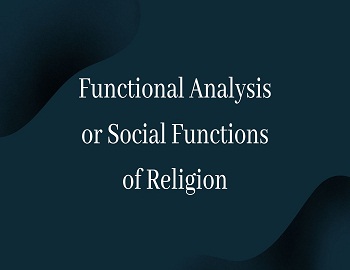Social Stratification:
The process by which individuals and groups are ranked in a more or less enduring hierarchy of status is known as stratification. The term stratification denotes the process or condition in which the layer (strata) of persons or groups are ranked differentially similar to the strata or layer constituting the earth. Just as Just as geologists have found several layers in sedimentary rocks of the earth, social scientists have been able to establish several strata or groups of people which forms a hierarchy of social positions and prestige, power, and privileges associated with it. But unlike the term used in Geology, in the sociological approach, the higher and lower layers have been judged in terms of the scale of values. Therefore, Ginsberg says, “Stratification as a universal feature of human society depends on the two phenomena of differentiation and evaluation.”
People in every society and culture are socially differentiated by groups and categories. The groups are organized by a number of persons having common interests and common leadership and are classified into categories when they are regarded by their fellows as having something in common. A social group may be identified as an aggregation of individuals who are tied together by a certain network of reciprocal relationships for specific purposes. Each individual is conscious of the group itself and its symbols. Such groups share common values, ethics, and ideas as they belong to a larger interest group i.e. the society. Each social group maintains a unit and a demarcating boundary for the in-group and for the members of the outgroup, so far as specific interests are concerned. The descent group or lineages are the basic groups in many traditional societies. Where such societies do have a name to describe these groups, it is termed a category (Hammond, 1978).
The stratification or division of society into several strata is a characteristic feature of most social systems. Social stratification exists when social inequality becomes part of the social structure. In all societies at all times, one form of social inequality or the other has always existed. Social inequality can either exist in the form of a hierarchy of groups or individuals, or, it may exist without the creation of a hierarchy. For example, in almost all societies, men and women are treated unequally, but there is no hierarchical ranking of men over women. On the other hand, if social inequality manifests itself in the form of a hierarchy involving the ranking of groups, then it is known as “Social Stratification”. Thus Social Stratification is a particular case of social inequality. The term “Social Stratification” refers to the ranking of groups in a hierarchy based on an unequal distribution of societal rewards like wealth, and prestige associated with lifestyle and power. Social stratification is essentially a group phenomenon.
Of late, it is being said that the concept of social stratification is no longer relevant to analyze social inequality in advanced industrial societies. It is being suggested that in these societies social stratification is being replaced by a continuous hierarchy of unequal status positions. Thus the new ranking is no longer a ranking of groups but of individual status positions. Such a phenomenon is being described as social hierarchy. However, social stratification is a universal phenomenon. As Pitrim Sorokin has noted “Unstratified society with real equality of its members is a myth which has never been realized in the history of mankind”.
Definitions of Social Stratification:
According to Gilbert, “Social stratification is the division of society into permanent groups or categories linked with each other by the relationship of superiority and subordination.”
According to Kurt B. Mayer, “Social stratification is a system of differentiation which includes a hierarchy of social positions whose occupants are treated as superior, equal or inferior relative to one another in socially important respects.”
According to Ogburn and Nimkoff, “By a social class, we mean one or two or more broad groups of individuals who are ranked by the members of the community in socially superior and inferior positions.”
According to Lundberg, “A stratified society is one marked by inequality, by differences among people that are evaluated by them as being “lower” and “higher”.”
According to Raymond W. Murray, “Social stratification is the horizontal division of society into “higher” and “lower” social units.”
According to Williams, “Social Stratification refers to the ranking of individuals on a scale of superiority, inferiority, equality, according to some commonly accepted basis of valuation.”
According to Melvin Tumin, “Social stratification refers to the arrangement of any social group or society into a hierarchy of positions that are unequal with regard to power, property, social evaluation, and psychic gratification.”
According to Sorokin, “Social stratification meant the differentiation of a given population into hierarchically superposed classes. It is manifested in the existence of upper and lower social layers. Its basis and very essence consist in an unequal distribution of rights and privileges, duties and responsibilities, social values and privations, social power and influences among the members of society.”









Comments (No)